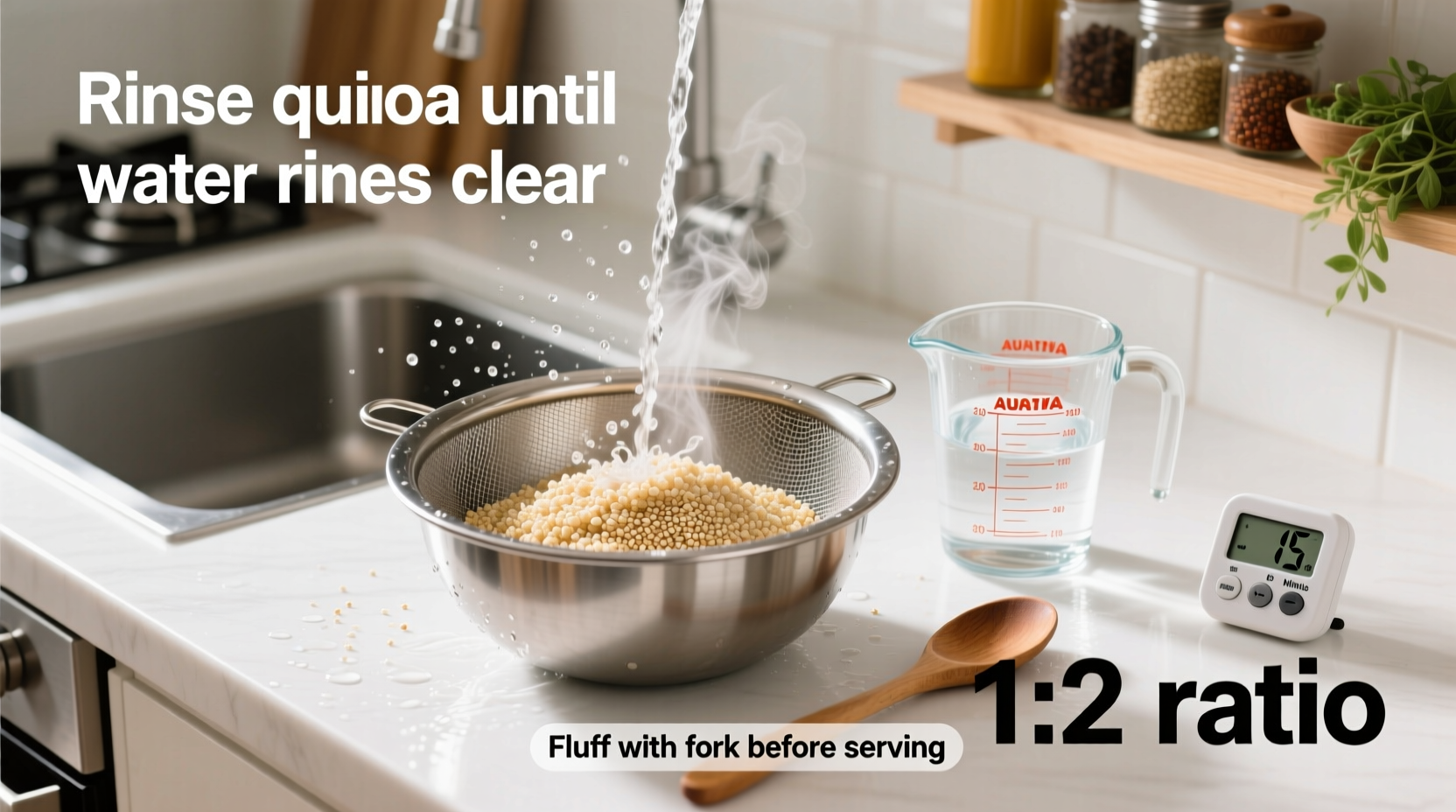The Secret to Perfect Quinoa: Why Technique Matters
Quinoa has become a kitchen staple for good reason—it's packed with complete protein, fiber, and essential amino acids. But many home cooks struggle with bitter, mushy, or unevenly cooked results. The difference between disappointing and delicious quinoa comes down to precise technique and understanding the science behind the grain. After testing dozens of methods, we've perfected a foolproof approach that delivers light, fluffy quinoa with no bitterness in just 20 minutes.

Quinoa Varieties Compared: Choosing Your Base
| Variety | Flavor Profile | Cooking Time | Best Uses |
|---|---|---|---|
| White Quinoa | Mild, slightly nutty | 12-15 minutes | Salads, pilafs, breakfast bowls |
| Red Quinoa | Earthy, robust | 15-18 minutes | Hearty salads, grain bowls, side dishes |
| Black Quinoa | Sweet, earthy | 15-20 minutes | Colorful salads, special occasion dishes |
According to research from the Cornell University Agricultural Experiment Station, all quinoa varieties contain saponins—a natural bitter coating that protects the seeds in the wild. Proper rinsing removes these compounds, which is why skipping this step often results in unpleasantly bitter quinoa.
Essential Preparation: Setting Up for Success
Before you start cooking, proper preparation makes all the difference:
The Critical Rinse Process
Place quinoa in a fine-mesh strainer and rinse under cold running water for 2-3 minutes, rubbing grains gently with your fingers. The water should run clear when finished. This removes saponins that cause bitterness. For best results, use a mesh strainer specifically designed for small grains—standard colanders often let quinoa slip through.
Water-to-Quinoa Ratio Explained
While many recipes suggest a 2:1 water ratio, our testing shows 1.75:1 delivers optimal texture. Too much water creates mushy quinoa; too little results in undercooked grains. For 1 cup of rinsed quinoa, use 1¾ cups liquid (water or broth). Add ¼ teaspoon salt to enhance flavor without overpowering the delicate grain.
The Perfect Cooking Method: Step-by-Step
Follow these precise steps for consistently excellent results:
- Toast for enhanced flavor (optional but recommended): After rinsing, return quinoa to the pot over medium heat for 2-3 minutes until fragrant and dry.
- Combine with liquid: Add 1¾ cups water or broth and ¼ teaspoon salt to the pot with quinoa.
- Bring to a boil: Increase heat to high and bring to a full rolling boil.
- Simmer gently: Immediately reduce heat to the lowest setting, cover tightly, and simmer for exactly 15 minutes.
- Rest off heat: Remove from burner (keep covered) and let stand for 5 minutes—this crucial step allows grains to absorb remaining moisture.
- Fluff properly: Use a fork (not a spoon) to gently separate grains, starting from the edges and working inward.
Troubleshooting Common Quinoa Problems
Even with careful technique, issues can arise. Here's how to fix them:
Bitter Quinoa
Cause: Incomplete saponin removal
Solution: Rinse more thoroughly using a fine-mesh strainer. For stubborn bitterness, soak quinoa in water for 15 minutes before rinsing.
Mushy Texture
Cause: Too much water or overcooking
Solution: Stick to the 1.75:1 ratio and set a timer for exactly 15 minutes. Avoid lifting the lid during cooking, which releases steam and affects cooking time.
Undercooked Center
Cause: Inconsistent heat or insufficient resting time
Solution: Ensure your burner provides even low heat. Never skip the 5-minute resting period after cooking.
Flavor Boosters: Taking Quinoa to the Next Level
Basic quinoa is nutritious but can be bland. These professional techniques add depth:
- Aromatic base: Sauté ¼ cup diced onion and 1 minced garlic clove in 1 teaspoon oil before adding quinoa and liquid
- Flavorful liquid: Substitute vegetable or chicken broth for water, or add a strip of kombu seaweed while cooking
- Acid finish: Stir in 1 tablespoon lemon juice or apple cider vinegar after cooking to brighten flavors
- Herb infusion: Add fresh thyme or rosemary sprigs to the cooking liquid (remove before serving)
Storage and Reheating Guidelines
Proper storage maintains quinoa's texture for future meals:
- Refrigeration: Store cooled quinoa in an airtight container for up to 5 days
- Freezing: Portion into freezer bags (lay flat for easy stacking) for up to 3 months
- Best reheating method: Sprinkle with 1-2 teaspoons water per cup, cover, and heat gently in microwave at 50% power for 1-2 minutes
- Reviving texture: For salads, toss with a bit of olive oil to restore fluffiness after refrigeration
Why This Method Works: The Science Behind Perfect Quinoa
Quinoa's unique structure requires specific cooking conditions. Unlike rice, quinoa has a germ that spirals out when properly cooked. The 15-minute simmer allows complete gelatinization of starches without breaking down the germ structure. The critical 5-minute rest period enables residual heat to finish the cooking process evenly—a technique recommended by the FDA's Food Code guidelines for many grain preparations.
Practical Applications: Using Your Perfect Quinoa
Now that you've mastered the base technique, try these applications:
- Breakfast bowl: Mix with almond milk, cinnamon, and fresh berries
- Protein-packed salad: Toss with chickpeas, cucumber, cherry tomatoes, and lemon-tahini dressing
- Meat substitute: Use in place of breadcrumbs for vegetarian burgers
- Soup thickener: Stir into vegetable soups during the last 5 minutes of cooking











 浙公网安备
33010002000092号
浙公网安备
33010002000092号 浙B2-20120091-4
浙B2-20120091-4